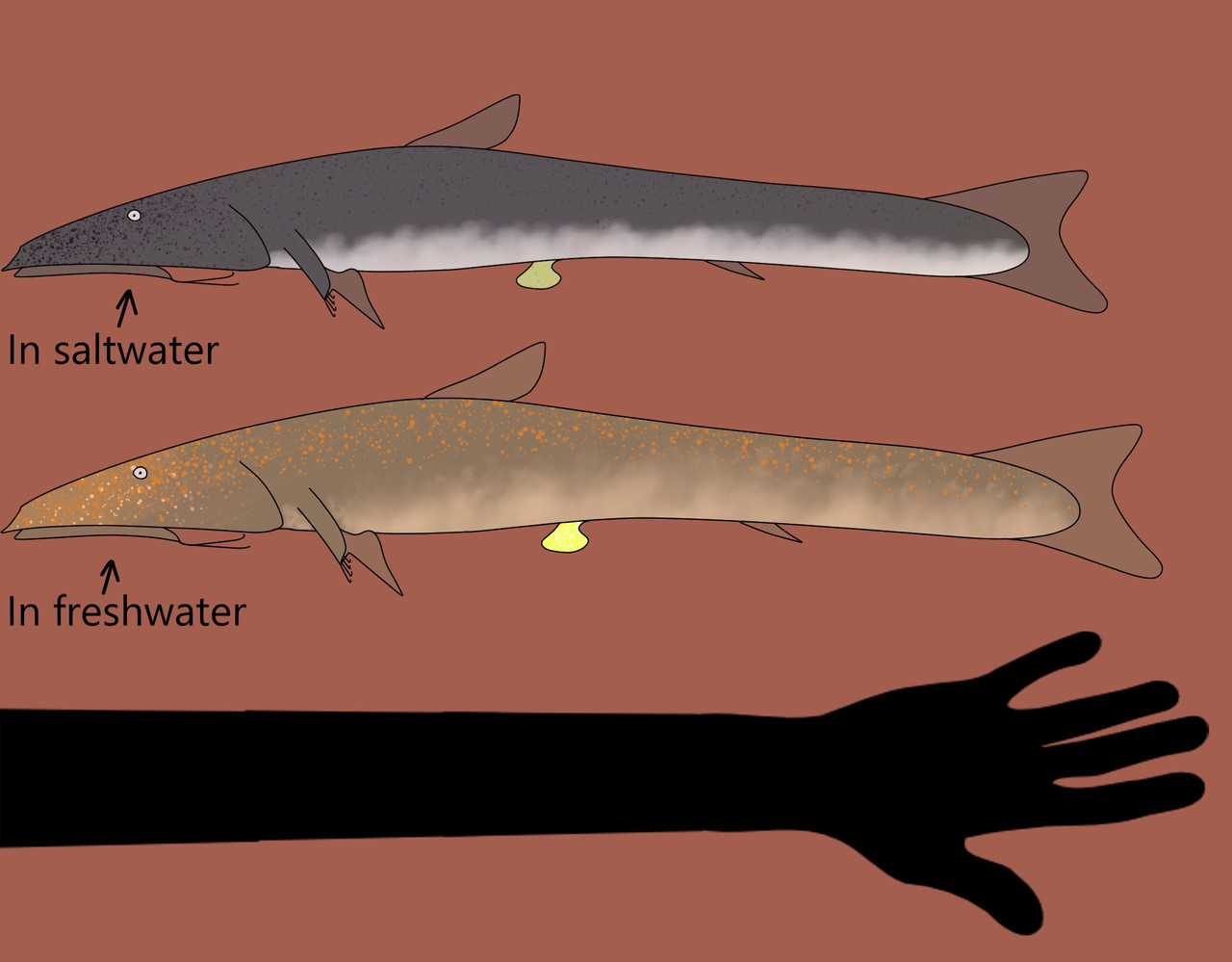HOME | DD
 ProjectMishmash — Whiskertrout
ProjectMishmash — Whiskertrout

#fish #speculativeevolution #speculativebiology #speculativezoology
Published: 2024-04-15 17:41:24 +0000 UTC; Views: 565; Favourites: 6; Downloads: 1
Redirect to original
Description
Submitted by Just A FossilCommon name: bananafin whiskertrout
Scientific name: (*Catructa musapluma*) translating to “cat trout with a banana feather”
Group and ancestor: (chordates). A descendant of the dwarf Otocinclus (*Otocinclus vestitus*)
Location/habitat: coastal rock and mussel beds off the north coast of arachnia (adults), (young and migrating adults) mountain pools and rivers of arachnia
Diet/niche: small to medium anadromous aquatic herbivore
Description: as mentioned in the arachnian porfish entry, the coasts of arachnia are home to a variety of habitats.
Where the seagrass meadows fade out to rocky flats and mussel beds, the banafin whiskertrout spends most of its adult life consuming algal film off of rocks using its sucker like mouth alongside limpets and other marine fish to scrape algae off the rocks.
However this species has a variety of interesting traits which dont look useful for a on average 40 centimetre long marine fish which lives in coastal rock fields.
Like their 4 specialized, finger like fin rays on ends of the muscled almost arm like base of the pectoral fin. For you see this animals reproduces upstream in freshwater mountain pools. And these traits are invaluable for their migrations
Reproduction: full grown salmocats will migrate to freshwater in mid spring when the rivers begin to overflow with water and new temporary stream paths are formed from mountain meltwater pools.
Oftentimes to get to the mountain pools they prefer to breed in they must scale waterfalls and steep rapids, to do this they suction on using their mouths to the rock and pull themselves up with their muscled pectoral fins. As they migrate upriver they develop their colouration from a black-blue back with dark spotting and white belly to a light brown back and crème coloured belly with red orange spotting on the back. When they climb up the mountains to their favoured breeding pools males will swarm around females as they dig a shallow pit in the gravel, flashing their banana yellow coloured pelvic fins in a attempt to impress the female enough so they get the first turn in fertilizing the eggs. Which she will lay in the depression in the gravel she has made.
After the eggs are fertilized (usually by multiple males) the adults typically live downriver for another month to regain energy before migrating back downstream to the sea
Eggs hatch in early to mid summer where they will feed on algae in the spring fed pools until fall, when lowering temperatures and threat of freezing make the rapidly growing young leave their mountain pools and migrate downstream to lowland lakes and rivers to continue growing for another few years.
After they have reached 3 quarters of their adult size they will begin to enter saltwater, changing colours to their marine form and growing to adult size overwinter, where they will join the other adults as they migrate upstream in the spring

























